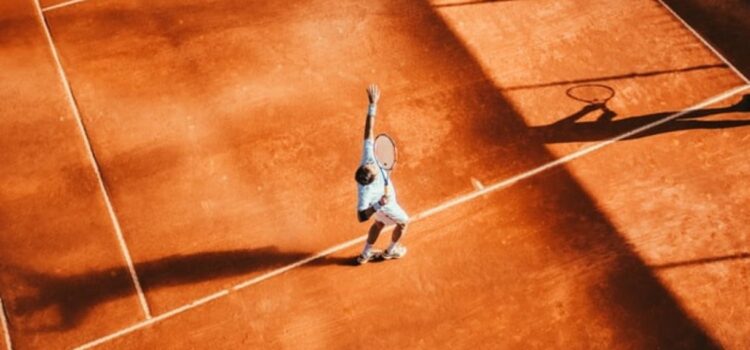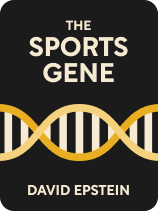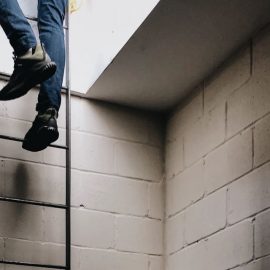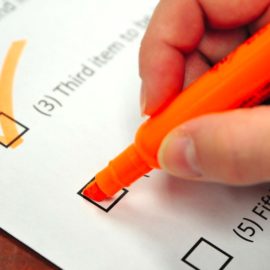

This article is an excerpt from the Shortform book guide to "The Sports Gene" by David Epstein. Shortform has the world's best summaries and analyses of books you should be reading.
Like this article? Sign up for a free trial here .
Can practice override talent? What does science have to say on the practice vs. talent conundrum?
According to David Epstein, the author of The Sports Gene, there is a disproportionate emphasis on practice as the defining variable in success. However, findings from research studies support a more well-rounded view of the power of practice. For some, practice provides the medium for innate (genetic) ability to flourish. Given the same amount of practice, others may have a more difficult time learning a particular skill.
Let’s look at evidence that Epstein has collected from sports and beyond that suggests each of us responds to practice and learns skills to varying degrees and in varying timeframes.
The Matthew Effect
Education researchers have been trying to answer the practice vs. talent conundrum for decades. In the early 1900s, Edward Thorndike (who Epstein notes is considered to be the founder of educational psychology) studied adults who were given the opportunity to practice a task. He found that:
- Everyone improved at the task (multiplying three-digit numbers), but those who were better at the task to begin with improved faster. Their natural “head start” coupled with practice actually widened the performance gap.
- Thorndike’s conclusion was that innate differences between participants allowed some to benefit from practice more than others.
- This phenomenon is called the “Matthew Effect.” The name comes from a Bible verse that basically says that the rich will get richer and the poor will get poorer.
| A Different Perspective on the Matthew Effect The Matthew effect shows how underlying differences between people (differences that come from our genes and experiences) lead to both different starting points and different results when learning a skill. It helps to explain why the 10,000-hour “rule” cannot be applied broadly. If we all learn at different rates and have different starting points, then a set number of hours cannot account for individual differences. When viewed from a different perspective, however, The Matthew Effect can also be used to support the 10,000-hour rule. In that case, the logic could look like this: Those young athletes who showed more promise at the start of their athletic careers, in gym class, for instance, were recruited onto teams younger and received more attention from coaches. By the start of high school, their head start amounted to hundreds of more and or better hours of practice than their peers with a “lower” starting point. The Matthew Effect is also a common concern in early literacy. Educators stress the importance of building literacy early in the hopes of avoiding gaps in academic performance from delayed reading skills. The idea is that the students who have early access to and an early affinity for reading will learn to read younger. Since they are able and (presumably) enjoy reading, they will read more often and build their literacy skills further. By the time students are reading for content knowledge in school (as opposed to for enjoyment), the early readers will have a clear academic advantage. |
Thorndike’s assertion that people respond differently to practice has been born out countless times on the sports field and beyond and has been substantiated by several studies. Epstein gives these examples:
- In a study of ultra-endurance athletes, those who performed similarly reported a tenfold difference in practice time.
- In a study of darts players who had been playing for 15 years, only 28% of the variance in their skill came from practice.
- A study of chess players found that the average number of hours to become a chess master was 11,000 hours, but the range was 3,000 to 23,000 hours. Some who had practiced more than 25,000 hours were not masters.
| The “85% Rule” for Learning While we all learn new skills differently, there does seem to be a “sweet spot” when it comes to learning something new. Things that are “too easy” can quickly become boring. Things that are too difficult can cause us to abandon our learning and become disheartened. An article in the journal Nature used computer programs to determine that the “sweet spot” for learning a new skill is to be successful 85% of the time and fail 15% of the time. While the study measured computer learning, the authors suggest that the results can also be applied to human learning. Optimizing the success-to-failure ratio does not eliminate underlying differences in ability, but it could help us optimize our individual pace of learning. The article does not discuss an extension to sports, but it would make sense that athletes should neither feel under-challenged nor overly discouraged when training for their sport. |
Example: Practice Times Can Differ Wildly, Even at the Elite Level
Epstein uses the story of two elite high jumpers to illustrate how athletes can reach the highest level of their sport with startlingly different amounts of practice.
Stefan Holm won an Olympic gold medal in the high jump in 2004. He was a paragon of dedication to his craft. He completed twelve workouts per week, moved to live next to his training facility, and dedicated his life to the high jump for 20 years.
At the 2007 World Championships, Holm was beaten by Donald Thomas, who had taken up high jump eight months prior on a friendly bet with his friend. Thomas was known for skipping practice and admitting that he found the high jump boring compared to his passion (basketball). Moreover, Thomas’ technique was so different from other jumpers as to be comical. Still, his long legs and his abnormally long Achilles tendon (which acts like a spring when jumping) seem to have conferred an innate high jump ability that all of Holm’s practice couldn’t best.
As Epstein notes, Thomas’s career clearly does not support the idea of the 10,000-hours rule in multiple ways. He was successful from the very beginning of his career (which he started “late”). Additionally, his 2007 World Championships-winning jump is the highest in Thomas’ career to date at 7 feet 8 inches. He has gone on to win several other elite competitions and has competed in three Olympic games. But he has never jumped as high as he did that day in 2007, despite, presumably, many more hours of practice.
| Non-Sport Specific Practice Matters Thomas may not have had much training before becoming a world champion high jumper, but that does not mean he did not have any relevant practice. Thomas was already an athlete before trying his hand at the high jump. Epstein shares that Thomas’s athletic passion was basketball, a sport where jumping high is a clear advantage. Presumably, Thomas already knew that he was a good jumper, or he wouldn’t have made the friendly bet that launched his high jump career. A more nuanced view may be that he transferred his athletic skills from basketball to the high jump with startling results. |
Natural Athleticism vs. Sport-Specific Practice
As evidenced by Donald Thomas’ high jump success, naturally gifted athletes can frequently rise to the elite level of their sport with far less practice than their peers. This calls into question the strategy of amassing as many sport-specific practice hours as possible.
In a study of athletes in “cgs” sports (“centimeters, grams, and seconds” sports such as rowing, jumping, and weight lifting), the elite athletes actually logged fewer hours of training than their peers until their late teenage years. Epstein notes that this could be because their natural athletic ability allowed them to “coast” until then. Another study on sprinters showed that starting intense training too young could hinder long-term success because athletes reach a “speed plateau” that they cannot train past.
| Early Specialization in Sports As we have seen, the attitude that more practice is better is very common in American culture. As a result, parents are increasingly encouraging their children to specialize in sports from a very early age. While early specialization may work for some athletes (Tiger Woods would be a top-of-mind example for many people as he was hitting golf balls by 11 months old), research has shown that early specialization is not only unnecessary but potentially harmful in most sports. A literature review of studies involving specialization in sports noted that early specialization carried risks of physical injuries, burnout, and psychological stress. The study concluded that, for most sports, waiting until late adolescence to focus on a single sport was the best strategy. Interestingly, Tiger Woods (as noted in Chapter Three of The Sports Gene) maintains that he was never pushed to practice golf but was always the one asking to play. His seems to be a fortuitous case of early passion, the opportunity for early practice, and success. |
In Australia, later specialization in a specific sport is part of the strategy for identifying athletes who will compete on the world stage. Coaches and recruiters have found success searching for athletes (like Thomas) who are ‘natural fits’ in specific sports regardless of their experience. This involves switching some athletes out of their current sports and assigning them to new ones (called “talent transfer”). As Australia took home ten times more medals per citizen than the United States in Sydney, the strategy seems to work. Epstein uses the following examples of Australian athletes to highlight talent transfer:
- Alisa Camplin competed in sailing, track and field, and gymnastics before she was encouraged to try aerial skiing (despite the fact that she had never seen snow before). Skeptics told her that she was “too old” and started “too late,” but within three years she was in the World Cup, and several years later, in 2002, she won an Olympic gold medal.
- In 2004 Australian talent scouts held an open call for female athletes interested in competing in the skeleton (the event in which athletes sled headfirst down an icy track) at the next Olympic games. Athletes were selected based on their 30 meter sprint times and their ability to jump onto a sled (athletes begin the skeleton event by sprinting and jumping onto their sled). Despite having less than two years to practice in an entirely new event, selected athletes were very successful. Michelle Steele qualified for the 2006 Olympics, and Melissa Hoar won the U23 championships and made the Olympic team in 2010 and 2014. Neither woman had heard of the skeleton event before auditioning.
| Accessibility of Sports Without a doubt, Alisa Camplin, Michelle Steele, and Melissa Hoar are incredible athletes, and their success stories are evidence of natural ability being just as, if not more important than, years of training even at an elite level. However, the relative obscurity of the aerial skiing and skeleton events is worth noting. There are plenty of examples of naturally gifted athletes rocketing to the top of their field across the sports world. But the popularity and accessibility of the sport in question certainly have an impact on the chances of success. Some sports are clearly more accessible than others. For a high school to have a rowing program, for example, athletes need access to a safe and navigable body of water, transportation to the water, a huge amount of expensive equipment, and a well-equipped coaching staff to keep athletes safe. For snowsports, accessibility is even more limited; by equipment, geography, transportation, seasonality, cost, and so on. Athletes who rocket to the top of less accessible sports have the advantage of a much smaller pool of competitors. Here is a graphic showing the chances of high school athletes making it to the summer Olympics by sport. It estimates the chance of a high school female basketball player (a popular and accessible sport) making it to the Olympics to be approximately one in 45,500. The chance of becoming an Olympian in equestrian events (far less accessible) is estimated to be one in 198. |
Neuron Pruning: a Counterargument to Late Specialization
While research may indicate that early training is not a prerequisite for success in many sports, there are also arguments for training at a young age. Epstein offers the concept of neuron pruning as a possible counterargument to late specialization. Neuron pruning refers to the idea that humans are born with an abundance of neurons that are selectively “pruned” based on what our brains focus on. This is a “use it or lose it” view of neurons and our opportunity to prime our brain for certain skills.
Epstein cites a study suggesting that if children did not take up serious chess by 12, they were much less likely to become an international grandmaster. One explanation may be that children who started “late” missed the opportunity to strengthen the connections needed to play chess at the elite level, and critical neurons were pruned.(Shortform note: According to an article from the National Academy of Sciences, infants have 100 billion neurons at birth, which continue to form rapidly until the age of two. At this age, they may have double the neurons that adults will have. The article notes that, in a sense, infants are born with brains that are “ready” to adapt to various circumstances. As we age and learn, the connections that become the most relevant to our lives and environments get stronger, and those that we do not use are “pruned.”)

———End of Preview———
Like what you just read? Read the rest of the world's best book summary and analysis of David Epstein's "The Sports Gene" at Shortform .
Here's what you'll find in our full The Sports Gene summary :
- A look at how our genes play a determining role in our success in sports
- Why practice doesn't always guarantee success
- The fortuitous gene pairings that can lead to elite athleticism






